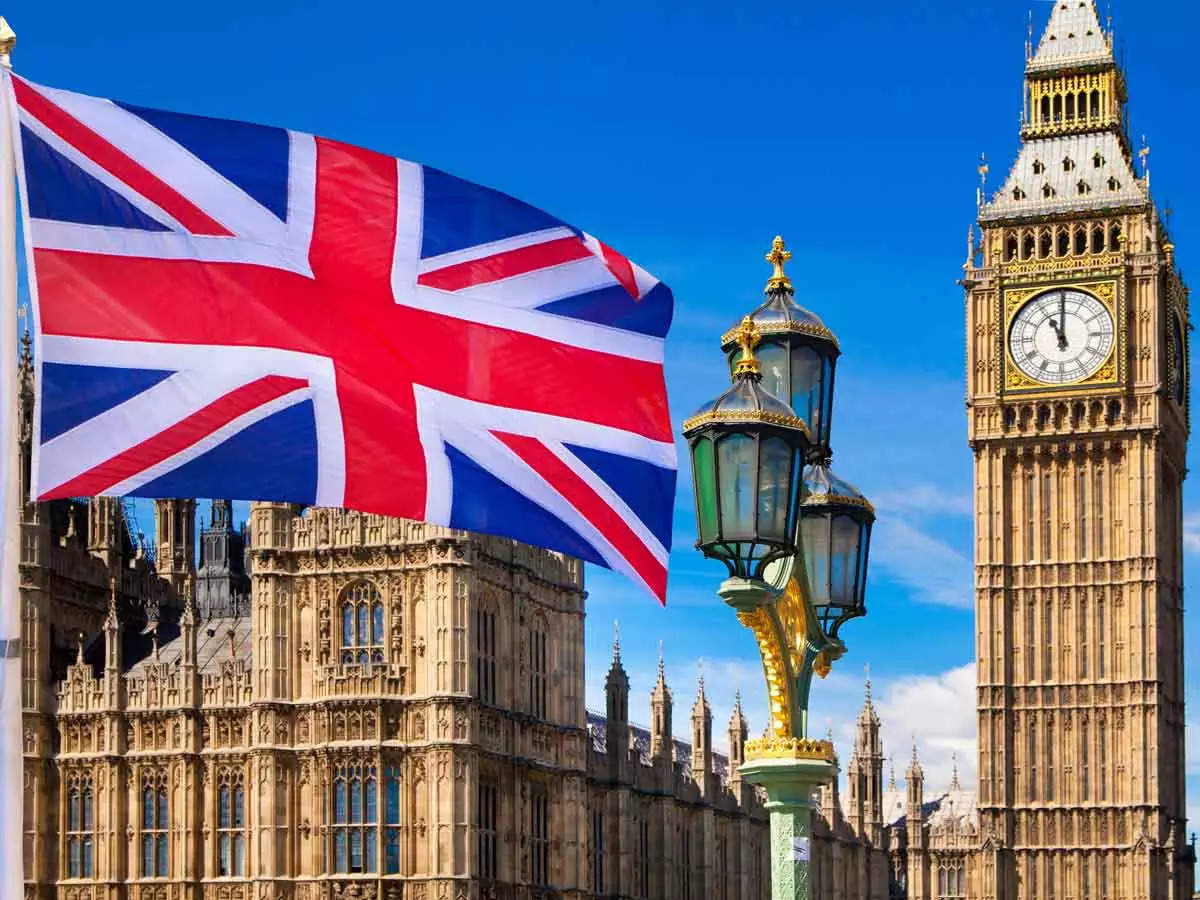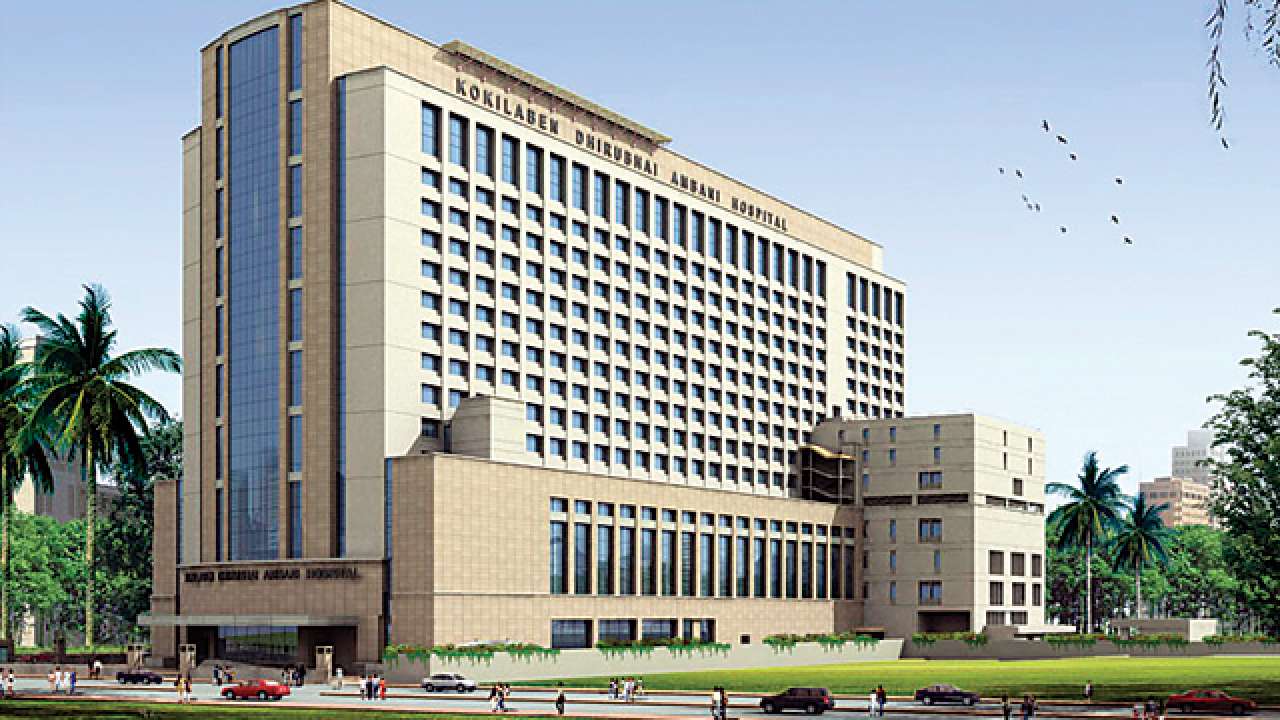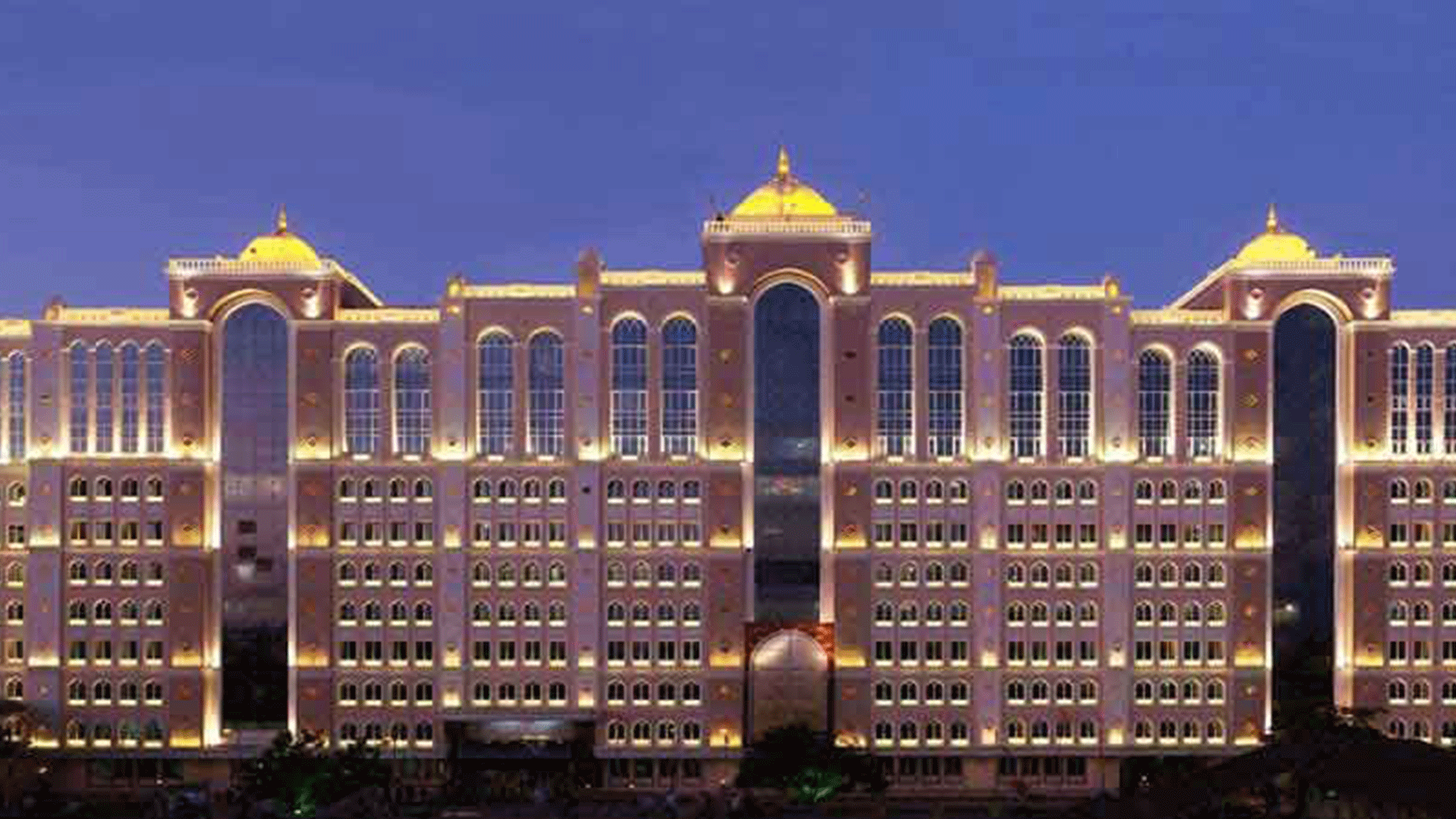Top 10 Best Dermatology hospitals in Mumbai in 2022

Dermatology is the part of medicine that deals with skin problems. It is a field of study that involves both medicine and surgery. A dermatologist specializes in skin, hair, and nail diseases as well as some cosmetic issues.
In 1708, the famous Hôpital Saint-Louis in Paris opened the first great dermatology school. Around the same time, the first textbooks (Willan’s, 1798–1808) and atlases (Alibert’s, 1806–1816) also came out.

The U.S.
In the United States, a general dermatologist needs four years of training after getting a medical degree (M.D. or D.O.) to be eligible for board certification by the American Academy of Dermatology, American Board of Dermatology, or American Osteopathic Board of Dermatology.
This training includes one year as a medical, transitional, surgical, or pediatric intern, followed by three years as a dermatology resident. After this training, one- or two-year fellowships are available in immunodermatology, phototherapy, laser medicine, Mohs micrographic surgery, cosmetic surgery, dermatopathology, or pediatric dermatology.
Even though dermatology fellows offer more subspecialty training, many dermatologists can do these jobs well without subspecialty fellowship training. In the United States, dermatology residency positions have been some of the hardest to get for the past few years.
Since more than ten years ago, there has been a shortage of dermatologists in the United States. The Journal of the American Medical Association published a study that said there were less than 3,4 dermatologists for every 100,000 people.

United Kingdom
Dermatologists in the U.K. are doctors who have gone on to specialize in medicine and then subspecialize in skin care. It comes down to:
- To get an MBBS, MBBCh, MB, or BChir degree, you must attend medical school for five years.
- Rotations in different specialities for two years.
- A higher degree in medicine and membership in the Royal College of Physicians require two to three years of training in general medicine.
- After passing the MRCP exam, applying to become a Specialty Registrar (StR) in
- Dermatology and training in dermatology for four years.
- Passing the Dermatology Specialty Certificate Exam before the end of the training
- When the doctor finishes the four years of training, they are a certified dermatologist and can apply for a job as a consultant dermatologist in a hospital.
Cosmetic dermatology Fields
A unit for cosmetic dermatology in the Philippines at S.M. City North Edsa
Dermatologists have been at the top of cosmetic surgery for a long time. Some dermatologists get training in surgery as part of a fellowship. Many doctors learn how to use botulinum toxin, fillers, and laser surgery during their residency.
Some dermatologists use liposuction, blepharoplasty, and facelifts to make people look better. Most dermatologists only do cosmetic procedures that aren’t too dangerous. Even though the American Board of Dermatology doesn’t have formal guidelines, there are many cosmetic fellowships in surgery and laser medicine.
Dermatopathology
A dermatopathologist is a dermatologist or pathologist who focuses on skin diseases.
Dermatologists and pathologists both work in this field. A dermatopathology fellowship usually takes one year to finish for a dermatologist or pathologist. This usually takes 12 months and includes both general pathology and dermatopathology.
Dermatopathologists can come from either of these two fields. Many dermatologists are also good at dermatopathology when they finish a standard dermatology residency. Some dermatopathologists can take their exams after completing a dermatology residency and a pathology residency.
Trichology
Trichology is the study of hair. Trichology studies diseases that cause hair loss, hair changes, hypertrichosis, and changes to the scalp. Dermatologists specializing in trichology use trichoscopy to find out what’s wrong with a person’s hair.
Immunodermatology
This field is focused on treating immune-mediated skin diseases like lupus, bullous pemphigoid, pemphigus Vulgaris, and other similar conditions. Specialists often run immunopathology labs in this field. Immunodermatology tests are needed to correctly diagnose and treat many diseases that affect epithelial organs like the skin, mucous membranes, digestive tract, and respiratory tract. The clinical and histological symptoms of the different diseases often overlap.
Even though the diseases themselves aren’t prevalent, they may look like common skin conditions like urticaria, eczema, and chronic itch. Immunodermatological diseases are often hard to spot because of this. Blood and tissue samples from all over the United States are sent to different labs for testing. These samples come from medical facilities and doctors who sent them there.
Mohs operation
Mohs surgery is the main thing. Mohs surgery is a subspecialty of dermatology that focuses on removing skin cancers using a method that lets most of the outer and deep tumour margins be checked during surgery. The procedure is a type of CCPDMA processing. Dr Frederic E. Mohs made it in the 1930s.
Physicians trained in this technique must be comfortable with pathology and surgery. During their residency, dermatologists get a lot of training in both. Mohs surgery is a specialized technique that doctors can learn during their dermatology residency. However, many doctors want more training in Mohs surgery, either through formal preceptorships to become fellows of the American Society for Mohs Surgery or through one-year Mohs surgery fellowship training programs run by the American College of Mohs Surgery.
In 2020, the American Board of Dermatology (ABD) will set up a board-certification exam in the subspecialty of Micrographic Dermatologic Surgery. This was approved by the American Board of Medical Specialties (ABMS) (Mohs Surgery). The test was given for the first time in October 2021 to any board-certified dermatologist in the U.S. who does Mohs surgery, no matter if they learned how to do it during a dermatology residency or a fellowship.
For this technique to work, the same doctor has to do two jobs: as a surgeon and a pathologist. If either of these two tasks is given to another doctor or qualified health care worker, it is no longer considered Mohs surgery.
Pediatric dermatology
Physicians can become experts in this field by completing both a residency in paediatrics and dermatology. Or, they could choose to do a fellowship after their possession. This field deals with the complicated diseases of newborns, inherited skin diseases called genodermatoses, and the many problems that come with working with children.
Teledermatology
Teledermatology is the main topic. Teledermatology is a type of dermatology in which telecommunication technologies are used to share medical information and treatment through audio, visual, and data communication, including photos of skin conditions, between dermatologists and non-dermatologists who are evaluating patients, as well as dermatologists directly with patients from a distance.
During the severe coronavirus outbreak in India, some dermatologists have started to talk to their patients online using popular apps like Practo, Apollo Pharmacy, Skin Beauty Pal, Lybrate, etc. This subspecialty looks at ways to look at skin conditions from a long way away to share knowledge, set up second-opinion services for experts or keep track of people with long-term skin conditions. Teledermatology can cut down on wait times by letting dermatologists treat minor conditions online while prioritising serious conditions that need care immediately.
Dermatoepidemiology
Dermato epidemiology is the study of skin diseases at the population level.
One part of it is figuring out how many skin diseases there are worldwide. From 1990 to 2013, skin diseases caused about 2% of all disease-related disabilities worldwide, as measured by disability-adjusted life-years.
Let’s talk about the Top 10 Best Dermatology hospitals in Mumbai in 2022
1. Designer Bodyz
Designer Bodyz is a well-known clinic in Mumbai that helps people with cosmetic and skin problems. The centre, which Dr Parag Telang started, has high-tech amenities and treatments.
Some of the best services are abdominoplasty, Vaser liposuction, creating dimples, blepharoplasty, mommy makeover, facial feminization, building v-lines, mastopexy reduction, and belt lipectomy, periareolar implants, buttock augmentation, and much more.
Hospital Address: 401-402, Vastu Precinct, Sundervan, Lokhandwala Complex Road, Andheri West, India. Mumbai – 400053
Team and What They Do
A team of cosmetic surgeons trained at top centres in France and Belgium, a patient coordinator, a dermatologist, and a group of nurses committed to taking care of the patient.
Infrastructure
The clinic has a help desk for people from other countries, a waiting room, and rooms for people who need to stay in the hospital after surgery.
It’s easy to get to ATMs, restaurants, and pharmacies nearby, and you can call a taxi from here.

2. Areeva Medspa Mumbai, India
Started: 2015
Single Specialty, Number of Beds,
About Areeva Medspa
- Dr Audumbar Borgaonkar, a plastic surgeon and hair transplant specialist, opened Areeva Medspa in 2015. It has the most up-to-date cosmetic treatments that have been approved by the US Food and Drug Administration.
- Arreva Medspa is great at surgical and non-surgical procedures, such as hair transplants, liposuction, breast surgeries, facial surgeries, mommy makeovers, weight loss surgeries, reconstructive surgeries, and fillers. Their goal is to provide world-class aesthetic treatments.
- With more than 12 years of experience, Dr Audumbar Borgaonkar sees more than 350 people each year just for hair transplants.
- In addition to the traditional hair transplantation methods of FUT and FUE, BIO FUE treatment is also offered here.
- More than 3000 happy people have been helped by the clinic so far.
- Dr Borgaonkar has done 1000 hair transplants, 700 PRP, 1000 laser treatments, 100 liposuction surgeries, and 50 breast reduction surgeries in the clinic.

3. Kokilaben Dhirubhai Ambani Hospital, Mumbai
Started: In 2006
There are 750 beds.
Multi-speciality
About Kokilaben Dhirubhai Ambani Hospital, Mumbai
- Reliance Group opened the Kokilaben Dhirubhai Ambani Hospital in 2008. It is one of the most modern and state-of-the-art multispecialty tertiary care hospitals.
- The hospital is approved by the Joint Commission International (JCI) and the National Accreditation Board for Hospitals & Healthcare Providers (NABH), as well as the College of American Pathology (CAP) Accreditation, the USA, and the National Accreditation Board for Testing and Calibration Laboratories (NABL) Accreditation, India.
- Kokilaben is the only hospital in Mumbai with a “Full-Time Specialist System” (FTSS), which makes it easy to get in touch with specialists who work only at Kokilaben Dhirubhai Ambani Hospital.
- Hospitals use treatment models based on protocols and care pathways to ensure that patients get the best results.
- Kokilaben Hospital offers state-of-the-art, non-invasive treatments for various cancers and other potentially debilitating diseases. These treatments don’t hurt healthy tissue nearby and don’t involve surgery.
- They are the first in India to have a 3-room Intra-operative MRI Suite (IMRIS), a diagnostic and imaging solution in which the patient is never moved.
- Novalis TX at Kokilaben Hospital is one of the world’s first whole radiosurgery systems for the brain, liver, pancreas, prostate, and lung.
- Eighteen high-tech cancer care centres have been set up at Kokilaben Dhirubhai Ambani Hospital.
- Over 6,300 complex cancer surgeries have been done with good results.
- It is the only hospital in India that has done 1000 Robotic Surgeries in the first 48 months after it opened.
- Honeywell and the Times of India have named Kokilaben Hospital the most imaginative hospital building in India for its use of controlling power consumption, natural resources, worker safety, personal protection, indoor environment quality and control, energy-efficient appliances and fixtures, continuous power supply, fire detection and notification, surveillance and intrusion, and worker safety.
- The Times of India surveyed all of India and found that the Kokilaben Dhirubhai Ambani Hospital is the best in western India for dermatology, diabetes, plastic/cosmetic surgery, and trichology.
- Doctors like Dr. Tanu Singhal, Dr. Jawahar Mansukhani, and Dr. Chaitali Ghandhi, among others, go to the hospital.
4. Prachi’s Novacutis Clinic
The Clinic was opened in 2010
About the Novacutis Clinic run by Dr Prachi in Mumbai
- Mumbai is home to Prachi’s Novacutis Clinic, a well-known Boutique Aesthetic Clinic.
- It offers a wide range of medical aesthetic treatments that have been approved by the FDA and have little or no downtime.
- Laser skin treatments, hair care, non-surgical facelifts, fillers, facials, non-invasive body contouring, and skincare products for men and women are all part of this treatment plan.
5. Nanavati Super Specialty Hospital, Super Specialty, Mumbai
Started: In 1950.
There are 350 beds.
About Nanavati Super Specialty Hospital, Super Specialty, Mumbai
- Jawaharlal Nehru, India’s first prime minister, opened Nanavati Super Specialty Hospital in 1951. For the past 65 years, it has been a leader in health care.
- The hospital is accredited by NABH and has won many awards, such as the E-India Award in 2010, the Edge Awards in 2011 and 2012, the Healthcare Excellence Award, the CISCO Technology Award, and the Medical Excellence Award.
- One of the most advanced centres in North India for Digestive and Hepatobiliary diseases, Gastro-Intestinal Surgery, and Minimal Access & Bariatric Surgery.
- Because of how well the nurses cared for patients, the hospital won the NABH Nursing Excellence Certification award.
6. Jaslok Hospital
Started: 1970
There are 364 different kinds of beds.
About Jaslok Hospital, Mumbai
- Jaslok Hospital is one of the oldest multispecialty hospitals in the country. It opened in 1970.
- The NABH-accredited hospital was started by the late Indian surgeon, institution builder, and medical educator Shantilal Jamnadas Mehta. The hospital was named after Seth Lokoomal Chanrai, who was a philanthropist.
- The Padma Bhushan, India’s third-highest civilian honour, was given to Dr Mehta by the Indian government in 1971.
- The hospital has experts in Cardiology, Oncology, Neurosurgery, Nuclear Medicine, Obstetrics and Gynecology, Ophthalmology, Orthopedics, Paediatrics, Paediatric Surgery, Pain Management, Pathology, Plastic Surgery, Psychiatry, Psychology, Pulmonology, and Radiation Oncology.
- First hospital in South Asia to use MR-guided ultrasound surgery on the liver, brain, kidney, thyroid, epilepsy, prostate, pancreas, and uterine fibroids.
- According to a recent health survey by Times, the hospital came in second in Mumbai and the West Zone and sixth in India.

7. Global Hospitals, Mumbai, India
Started: 1996.
There are 450 beds.
About Global Hospitals
- Multi-speciality, Mumbai
- Associated and Part of the Parkway Pantai Ltd. were set up in 1996.
- With a network of 22 hospitals, Parkway Pantai is one of the area’s largest integrated private healthcare groups.
- Parkway Pantai has more than 4,000 beds in Singapore, Malaysia, Brunei, India, China, and Vietnam, among other places in Asia.
- Global Hospitals, India’s fourth-largest healthcare chain, was the first to do transplants of multiple organs, such as kidneys, liver, heart, and lungs.
- Every year, 18,000 surgeries are done by a global team of doctors.
- Every year, Global Healthcare Group sees 30,000 outpatients and 50,000 people who need to stay in the hospital.
- Swap Liver Transplant, Single Lung Transplant, and Minimal Access Lung Transplant were his “first” surgeries in India. He also did the first pediatric auxiliary liver transplant in Asia.
- Auxiliary Liver Transplant for Children in Asia
- The Two-Wheeler Ambulance Service started at the first hospital (GART- Global Accident Rescue Team)
- First hospital in South Asia to do the Nucleus Replacement in Spine Only. For liver transplants, the King’s College Hospital in London, United Kingdom, will work with the Indian Hospital.
- The Indian government gave this hospital its first award for research and development.
Centres of excellence include the Endoscopic Surgery Centre, Hepatobiliary and Liver Surgeries, Surgical and Medical Gastroenterology, Nephrology, Urology, and Minimal. - Invasive Surgery, Bariatric Surgery, Robotic Surgery, Neurosciences, Cardiology, Cardiothoracic Surgery, Oncology, Gynecology, Orthopedics, Joint Replacement Surgery, etc., accredited.

8. Fortis Hospital, Mulund, Mumbai
Started: 2002
There are 300 beds.
About Fortis Hospital, Mulund, Mumbai, multi-speciality, Mulund,
- Fortis Hospital in Mulund, Mumbai, has been around since 2002. It has been accredited four times by JCI and also by NABH.
- The brand Fortis was started in 1996, and it now has more than 55 health care facilities in India and other countries.
- Cardiology and Cardiac Surgery, Urology, Nephrology, Neurosciences, Orthopaedics, Digestive Care, Emergency Care, and Critical Care are just some of the specialities.
- It is India’s first hospital to start using an Electronic ICU.
- It has the first Blood Bank in India that has been approved by NABH and three Pathology Labs that NABL has approved.
- The hospital has won many awards, including the “Medical Team of the Year Award” at the 2014 British Medical Journal (BMJ) Awards India.
- Won the Asian Hospital Management Awards for Patient Safety and Human Resource Development in 2014.
- Won the “Asian Patient Safety Award” for “Innovation in Staff Education” in 2014.
- At the Healthcare Leadership Awards 2014, they won the “Best Patient Safety Award.”
Two times, in 2012 and 2013, the company won the “FICCI Healthcare Award for Operational Excellence.” - The Honourable President of India was awarded the ‘National Energy Conservation Award’ (2012).
- Won the Indian Healthcare Awards 2011’s “Best Orthopaedic Hospital” award.

9. Saifee Hospital
Started: 1948
There are 256 beds.
About Mumbai’s Saifee Hospital
- Saifee Hospital has been around since 2005 and has ISO and NABL accreditation.
- There was an old hospital called Saifee Hospital. It had been open since 1948. In 2001, work started on a new hospital on the same site as the old one.
- The former Prime Minister of India, Dr Manmohan Singh, was there when the new hospital opened in June 2005.
- Syedna Mohammad Burhanuddin built this hospital to honour his father, Syedna Taher Saifuddin.
- This hospital has a lot of different areas of expertise, from simple daycare to emergency medicine and complex heart surgery.
- During the 2011 bombings in Mumbai, hospitals helped people hurt by the blasts for free.
- It features India’s first LASIK suite (for advanced laser eye surgery).

10. New Age Wockhardt Hospital, Mumbai, India
Established in: 2014
Number of Beds: 350\s multi-speciality,
About New Age Wockhardt Hospital, Mumbai
- New Age Wockhardt Hospital was opened in 2014 and is in South Mumbai, the centre of the city’s business district.
- It is a tertiary care hospital with 21 floors.
- It is Asia’s first hospital with no wires at all.
- It is the first hospital in India to have paperless ICUs, wireless ECG management systems, and ambulance systems with GPS.
- The New Age Wockhardt Hospital is also the first to have an ICCA system, which lets doctors get patient information at any time and from anywhere.
- Three medical centres are part of the hospital. They are:
- The Wockhardt Institute for the Heart
- The Wockhardt Institute for Critical Care
- The Wockhardt Institute for Stroke
- Wockhardt Hospital is one of India’s third-level, super-speciality hospitals.
- The parent company, Wockhardt Limited, India’s 5th largest pharmaceutical and healthcare company, owns the chain of hospitals.
- With nine multispecialty hospital networks, Wockhardt is present all over the country.
Partners Medical International (PMI), based in the United States, is also linked to the group of hospitals. As a result, they can use PMI’s expertise in surgery and medical care and planning projects and building hospitals.
Edited by Prakriti Arora





